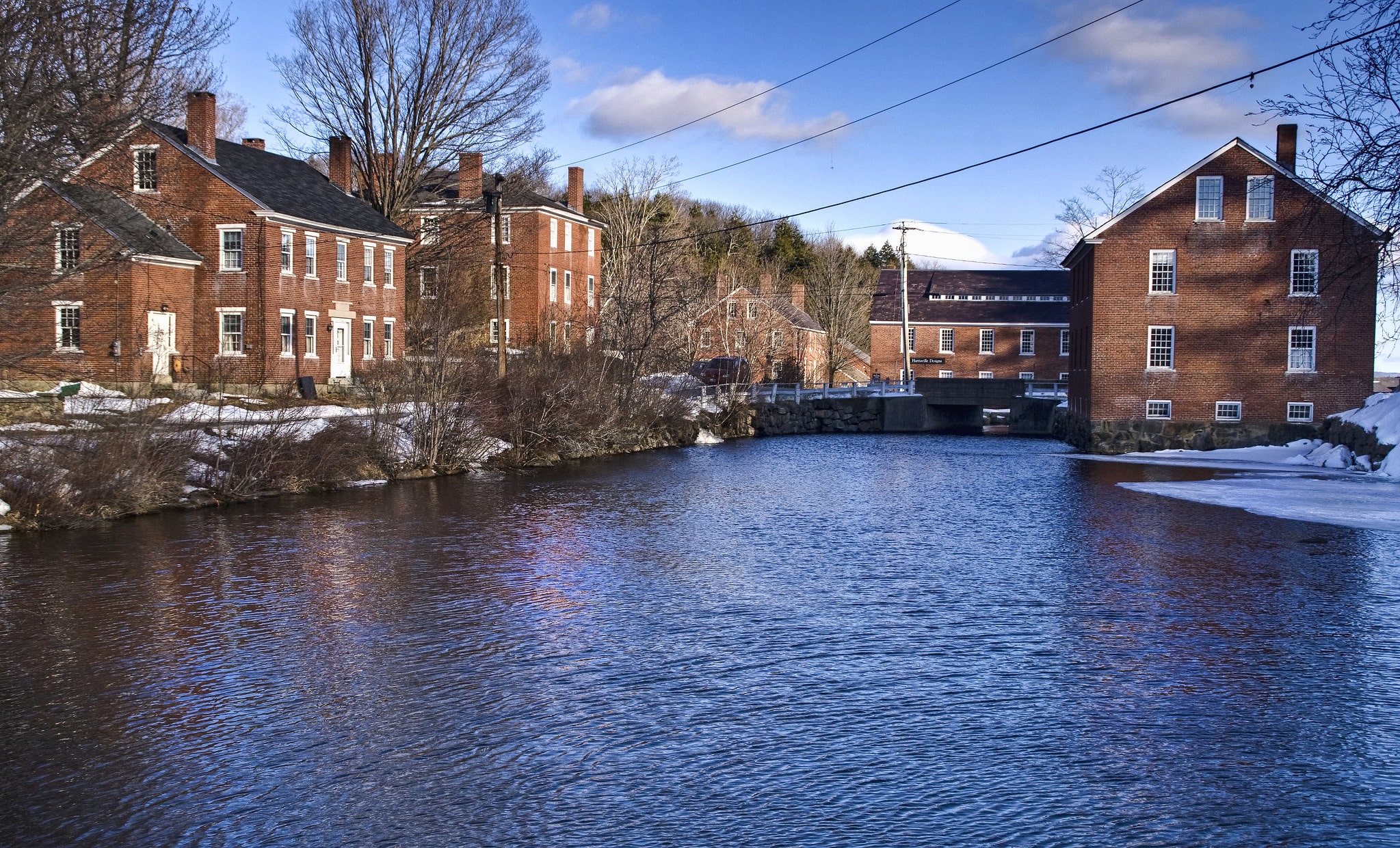
One of the dams holding back the historic Harrisville mill pond is among those that pose a high risk of property damage if they fail. Photo courtesy of Liz West / CC BY 2.0
Merrymeeting Lake is like so many others in the New Hampshire woods, a bucolic summer getaway of cabins and second homes where vacationers sail, swim and fish.
Like dozens of other lakes in the state, it also has a problem that is hidden from most of the people who come to enjoy it.
The lake’s state-owned dam is in poor condition, due in part to a spillway that would not be able to handle a historic storm under certain conditions. State regulators also found the spillway’s design is a problem: A buildup of water between the concrete slab and earthen embankment could erode the soil and lead to failure of the dam.
If that happened, water from Merrymeeting Lake could inundate a marina, a state fish hatchery, three state roads and several homes. Parts of New Durham, with around 2,600 people, also would be flooded.
“The concern we have with that dam is the spillway, the construction of the spillway. It’s a design that we wouldn’t probably incorporate now,” said Jim Gallagher, the chief engineer in the state’s dam bureau
The state has installed a drainage system as a stopgap.
The dam was among at least 1,680 nationwide identified by The Associated Press as high-hazard because of the potential for loss of life if they failed and considered to be in poor or unsatisfactory condition. Inadequate or poorly designed spillways were cited as a problem for many of the dams identified in the more than two-year investigation .
Emergency action plans obtained by the AP indicate that thousands of people living and working downstream could be at risk if those dams were to catastrophically fail, while separate inspection reports cite a variety of problems. Those include leaks that can indicate a dam is failing internally, unrepaired erosion, holes from burrowing animals and extensive tree growth, which can destabilize earthen dams.
New Hampshire, Vermont and Maine had 51 of the potentially problematic dams. New Hampshire had the most, with 37, followed by Vermont with nine and Maine with five. The numbers could have changed if repairs had been made since last year.
Many of the dams were built decades, if not centuries ago, to provide water and power to textile mills and other manufacturing shops. But today, most structures that hold back ponds and lakes are for recreation, drinking water and hydropower.
More than 50 dams have failed in New Hampshire over the past 100 years, though deaths are rare. One exception was the Meadow Pond Dam, which failed in 1996, killing a woman and flooding a small neighborhood. Nearly 70 have failed in Vermont, including the 1947 failure of East Pittsford Dam that devastated Rutland.
Some of the problems with high hazard dams go back years but have not been addressed because of inadequate government funding or an inability or refusal by private owners to make the repairs.
Several states are finally getting federal help. New Hampshire and Vermont are among those benefiting from a $10 million grant program run by the Federal Emergency Management Agency.
New Hampshire is receiving $475,437 for Pawtuckaway Lake’s Dolloff Dam, the Mendums Pond Dam and Upper Wilson Dam. As part of repairs to these dams, water in the lakes behind them has been drawn down.

